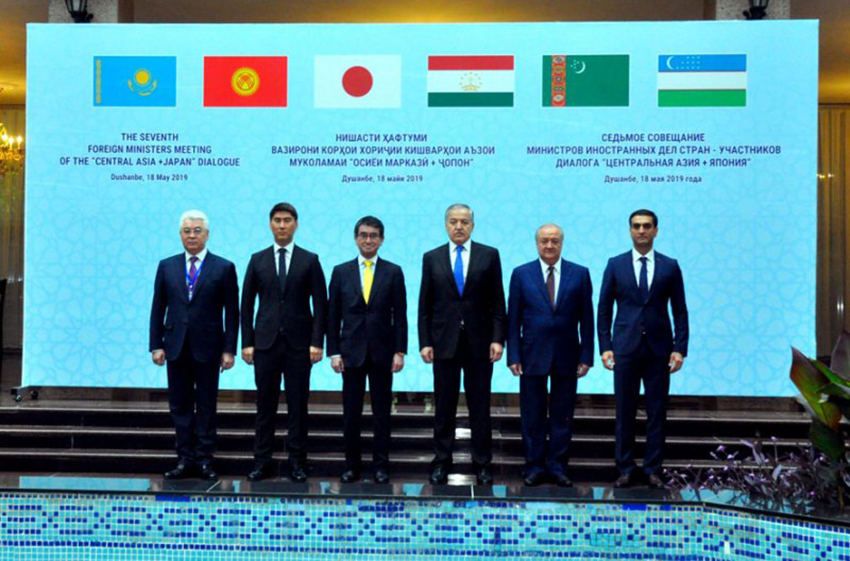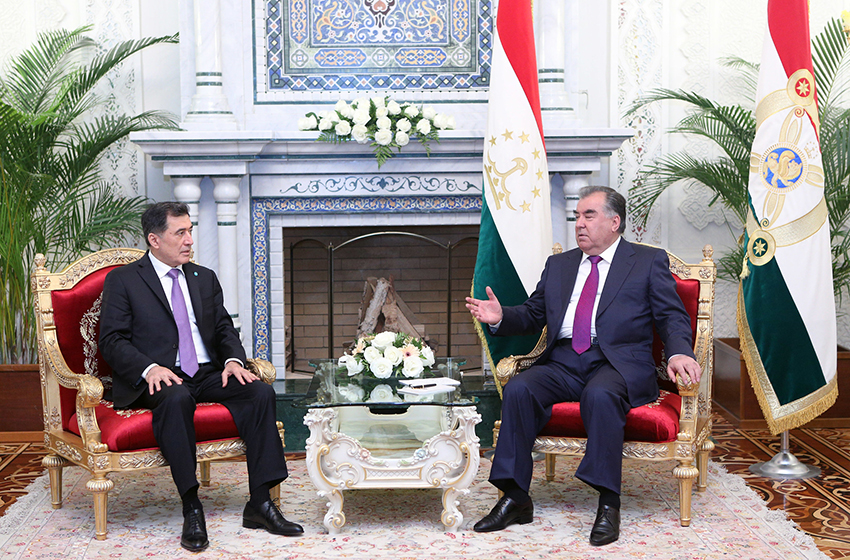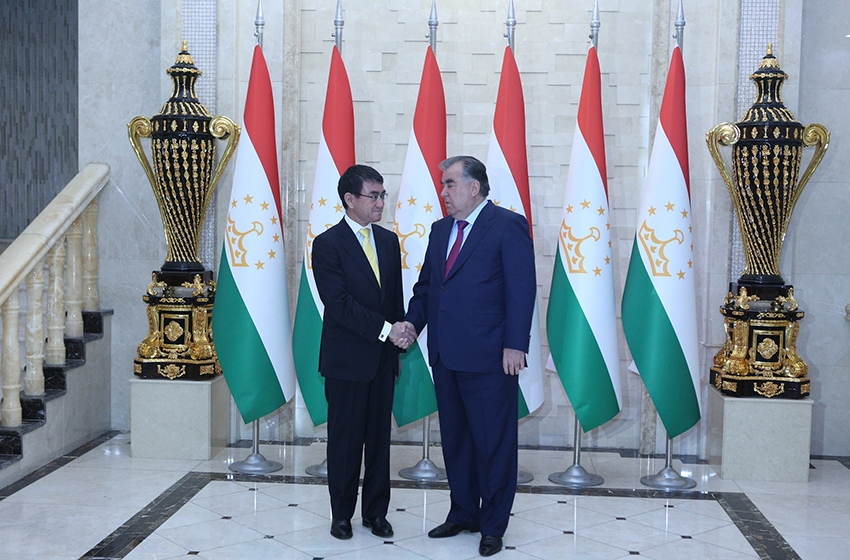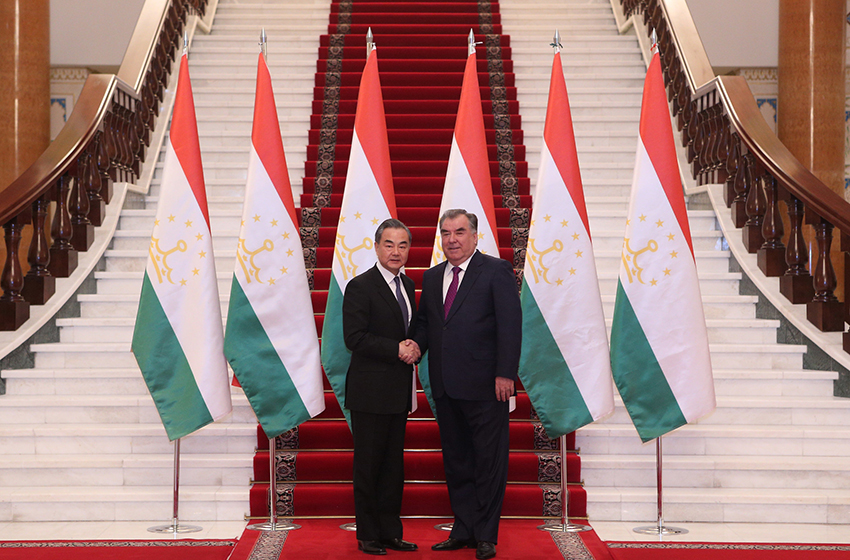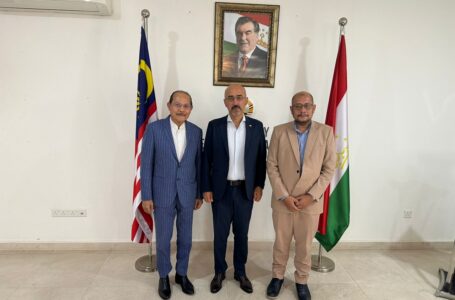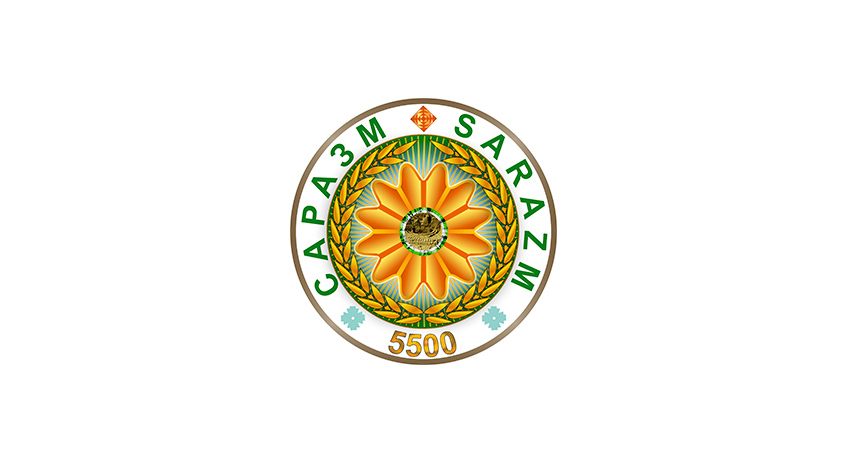
Inclusion of five-thousand-years-old historic site Sarazm to the world heritage list of UNESCO is the great achievement and high recognition of an image and glory of our ancestors to the mankind civilization. At present, there eight unique sites are proposed for including to the list of this authoritative organization.
The Founder of Peace and National Unity, Leader of the Nation, President of Tajikistan Emomali Rahmon.
We intend to hold the celebration of Sarazm city – one of the ancient sites in our country in 2020.
The Founder of Peace and National Unity, Leader of the Nation, President of Tajikistan Emomali Rahmon
Many nations in the world have been learning lessons of literature, architecture, education, culture, humanism and politics from the holy book of “Avesta”, heritages of Cyrus the Great, manuscripts of Darius the Great, historical sites of Sarazm, Hulbuk, Shahristan and Takhte Sangin, governing traditions of Sasanids and Samanids states, spiritual music of Barbad, famous poetry of Rudaki and Firdousi, scientific heritage of Zakariyeh Razi, Avicena.
The Founder of Peace and National Unity, Leader of the Nation, President of Tajikistan Emomali Rahmon
Thanks to the constant efforts of the Government of our country a part of those, namely Shashmaqom and Navruz were inscribed on the UNESCO List of Intangible Cultural Heritage and ancient cities of Sarazm and National Park of Tajikistan were inscribed on the UNESCO List of World Heritage sites.
Another historical and cultural event is that on the decision of UNESCO, unique historical and archeological five-thousand years old monument proto-urban site of “Sarazm” was included to the World Heritage List which protected by this Organization.
Acknowledgment of our cultural heritage by the world community demonstrates the acknowledgement of Tajiks as creators of civilization and culture.
Therefore, we have to teach our modern and future generations of this great heritage, to awake in their hearts feelings of pride of national state and value of national independent state, patriotism and recognizing the value of importance of our ancient sages.
The World Heritage Committee meeting in Brasilia has inscribed new cultural sites in Viet Nam, China, Tajikistan, France, the Netherlands, on the UNESCO World Heritage List. The Committee also agreed to the extension of two cultural properties in Germany, Norway.
The initiative of Tajikistan to celebrate the 5500th anniversary of Sarazm and is now part of UNESCO’s holidays. The celebration of Sarazm’s 5500th anniversary is scheduled for September 2020 next year.
Sarazm (Tajikistan).
Sarazm, which means “where the land begins”, is
an archaeological site bearing testimony to the development of human
settlements in Central Asia, from the 4th millennium BCE to the end of the 3rd
millennium BCE. The ruins demonstrate the early development of
proto-urbanization in this region. This centre of settlement, one of the oldest
in Central Asia, is situated between a mountainous region suitable for cattle
rearing by nomadic pastoralists, and a large valley conducive to the
development of agriculture and irrigation by the first settled populations in
the region. Sarazm also demonstrates the existence of commercial and cultural
exchanges and trade relations with peoples over an extensive geographical area,
extending from the steppes of Central Asia and Turkmenistan, to the Iranian
plateau, the Indus valley and as far as the Indian Ocean.
According to a governmental decree from 2001, the Sarazm archaeological complex in Panjikent was declared the Center for the Formation of Tajik Civilization, Craft and Urban Planning – also called the Historical Archaeological Reserve of Sarazm. On July 31, 2010, it was included in the UNESCO World Heritage List.
The Founder of Peace and National Unity, Leader of the Nation, President of Tajikistan Emomali Rahmon approved a symbol of celebration of the 5500th anniversary of the ancient city of Sarazm. The symbol was approved in accordance with the suggestion of the Chairman of the organizing committee, Prime Minister of the Republic of Tajikistan Kohir Rasulzoda.
The symbol of the 5500th anniversary of ancient Sarazm depicts details images that attest to the fact that our ancestors were skilled farmers, artisans, engaged in urban planning and urban governance. On both sides of the symbol, the word “Sarazm” is written in Tajik and English, and the date of the establishment of the city – “5500” is displayed in numbers. A twelve-cornered gold shape recently excavated in Sarazm is depicted in the center of the symbol. The 12 corners are a hint of the 12 months of the year, and the life-giving rays of the sun. In its center is the image of the ancient walls of Sarazm built of clay. Long-term studies by archaeologists of Sarazm indicate that one of the sacred customs of the Aryans, including residents of Sarazm, was worship and adoration of the heavenly light. The worship of the sun among the Aryans is their belief in the victory of light over darkness, and expresses the eternal rebirth of the Earth. All the details and images in this symbol reflect the ancient history of Sarazm.
Particularly, President Emomali Rahmon mentioned about the assistance of UNESCO in organizing International Event of Classical Music “Shashmaqom” Performers, introducing the date of the 1150th anniversary of founder of Tajik-Persian literature Abuabdullo Rudaki in UNESCO Celebrations List, allocation of means for further scientific research and ensuring protection of ancient monuments of Tajikistan – Sarazm town and Buddha monastery in Ajina-Teppa.
It was mentioned with gratification about the holding of International Symposium of Performers of Classical Music “Shashmaqom”, introduction of the 1150th anniversary of founder of Tajik-Persian literature Abuabdulloi Rudaki to the List of UNESCO anniversaries, including of ancient settlement Sarazm to the UNESCO List of World Cultural Heritage Sites and National Park of Tajikistan-Mountains of Pamir to the List of World Heritage of UNESCO.
Another historical and cultural event is that on the decision of UNESCO, unique historical and archeological five-thousand years old monument proto-urban site of “Sarazm” was included to the World Heritage List which protected by this Organization.
Many
nations in the world have been learning lessons of literature, architecture,
education, culture, humanism and politics from the holy book of “Avesta”,
heritages of Cyrus the Great, manuscripts of Darius the Great, historical sites
of Sarazm, Hulbuk, Shahristan and Takhte Sangin, governing traditions of
Sasanids and Samanids states, spiritual music of Barbad, famous poetry of
Rudaki and Firdousi, scientific heritage of Zakariyeh Razi, Avicena and
Aburaihan Beruni.
In this regard, the famous Iranian scholar Said
Nafisi writes that we, Aryan people, under the shadows of revolts of Abumuslim,
Muqannaa and others, under the shadows of creation of Samanids state and under
the shadows of poets of Mavara-un-nahr acquired language and came into
existence as a nation.
Therefore, we have to teach our modern and
future generations of this great heritage, to awake in their hearts feelings of
pride of national state and value of national independent state, patriotism and
recognizing the value of importance of our ancient sages.
We should take flame but not ash from our
ancient time. The history is instructive and no any nation or people can know
the worth of independence and its own state without knowing the value of its
past.
President Emomali Rahmon repeatedly visited Sarazm and per his instructions five archaeological excavations were carried out in Sarazm during 2003-2008.
Sarazm (Tajikistan)
Sarazm, which means “where the land begins”, is
an archaeological site bearing testimony to the development of human
settlements in Central Asia, from the 4th millennium BCE to the end of the 3rd
millennium BCE. The ruins demonstrate the early development of
proto-urbanization in this region. This centre of settlement, one of the oldest
in Central Asia, is situated between a mountainous region suitable for cattle
rearing by nomadic pastoralists, and a large valley conducive to the
development of agriculture and irrigation by the first settled populations in
the region. Sarazm also demonstrates the existence of commercial and cultural
exchanges and trade relations with peoples over an extensive geographical area,
extending from the steppes of Central Asia and Turkmenistan, to the Iranian
plateau, the Indus valley and as far as the Indian Ocean.
In connection with the preservation of historical monuments and national values, including national language and culture, traditions and customs, President Emomali Rahmon noted the necessity of adding Shashmakom (musical genre), Navruz and Chakan embroidery to the UNESCO World Cultural Heritage List.
While discussing the implementation of plans for increasing the influx of tourists, and enhancing the presentation of historical and cultural monuments, the officials emphasized the necessity of UNESCO’s assistance in working out the right strategies for the development of education and improving teacher training workshops.
The symbol of the 5500th anniversary of ancient Sarazm depicts details images that attest to the fact that our ancestors were skilled farmers, artisans, engaged in urban planning and urban governance. On both sides of the symbol, the word “Sarazm” is written in Tajik and English, and the date of the establishment of the city – “5500” is displayed in numbers. A twelve-cornered gold shape recently excavated in Sarazm is depicted in the center of the symbol. The 12 corners are a hint of the 12 months of the year, and the life-giving rays of the sun. In its center is the image of the ancient walls of Sarazm built of clay. Long-term studies by archaeologists of Sarazm indicate that one of the sacred customs of the Aryans, including residents of Sarazm, was worship and adoration of the heavenly light. The worship of the sun among the Aryans is their belief in the victory of light over darkness, and expresses the eternal rebirth of the Earth. All the details and images in this symbol reflect the ancient history of Sarazm.
Ministries, government agencies, institutions, organizations, executive bodies of the state authority, provinces, districts, and cities, and the mass media will be able to use the symbol of the 5500th anniversary of the ancient city of Sarazm.
Thanks to the constant efforts of the Government of our country a part of those, namely Shashmaqom and Navruz were inscribed on the UNESCO List of Intangible Cultural Heritage and ancient cities of Sarazm and National Park of Tajikistan were inscribed on the UNESCO List of World Heritage sites. Next year we will propose the music of Falak, the historical site of Hulbuk and festivals of Mehrgon and Sada to this reputable international organization.
Recently, another best example of our folk crafts – art of Chakan embroidery was inscribed on the Representative List of UNESCO by a resolution of this organization’s General Assembly.
Acknowledgment of our cultural heritage by the world community demonstrates the acknowledgement of Tajiks as creators of civilization and culture.
We intend to hold the celebration of Sarazm city – one of the ancient sites in our country in 2020
The traditional musical genre “Shashmaqom”, Navruz holiday and Chakan embroidery art are already on the List of the Intangible Cultural Heritage of Humanity. Tajikistan intends to celebrate the 5500th anniversary of ancient Sarazm, which in 2010 was also included in the Heritage List.
Particularly, President Emomali Rahmon mentioned about the assistance of UNESCO in organizing International Event of Classical Music “Shashmaqom” Performers, introducing the date of the 1150th anniversary of founder of Tajik-Persian literature Abuabdullo Rudaki in UNESCO Celebrations List, allocation of means for further scientific research and ensuring protection of ancient monuments of Tajikistan – Sarazm town and Buddha monastery in Ajina-Teppa.
It was mentioned with gratification about the holding of International Symposium of Performers of Classical Music “Shashmaqom”, introduction of the 1150th anniversary of founder of Tajik-Persian literature Abuabdulloi Rudaki to the List of UNESCO anniversaries, including of ancient settlement Sarazm to the UNESCO List of World Cultural Heritage Sites and National Park of Tajikistan-Mountains of Pamir to the List of World Heritage of UNESCO.
Inclusion of five-thousand-years-old historic site Sarazm to the world heritage list of UNESCO is the great achievement and high recognition of an image and glory of our ancestors to the mankind civilization. At present, there eight unique sites are proposed for including to the list of this authoritative organization.
Another historical and cultural event is that on the decision of UNESCO, unique historical and archeological five-thousand years old monument proto-urban site of “Sarazm” was included to the World Heritage List which protected by this Organization.
Many nations in the world have been learning lessons of literature, architecture, education, culture, humanism and politics from the holy book of “Avesta”, heritages of Cyrus the Great, manuscripts of Darius the Great, historical sites of Sarazm, Hulbuk, Shahristan and Takhte Sangin, governing traditions of Sasanids and Samanids states, spiritual music of Barbad, famous poetry of Rudaki and Firdousi, scientific heritage of Zakariyeh Razi, Avicena and Aburaihan Beruni.
In this regard, the famous Iranian scholar Said Nafisi writes that we, Aryan people, under the shadows of revolts of Abumuslim, Muqannaa and others, under the shadows of creation of Samanids state and under the shadows of poets of Mavara-un-nahr acquired language and came into existence as a nation.
Therefore, we have to teach our modern and future generations of this great heritage, to awake in their hearts feelings of pride of national state and value of national independent state, patriotism and recognizing the value of importance of our ancient sages.
We should take flame but not ash from our ancient time. The history is instructive and no any nation or people can know the worth of independence and its own state without knowing the value of its past.
More info: www.president.tj/node/21580


